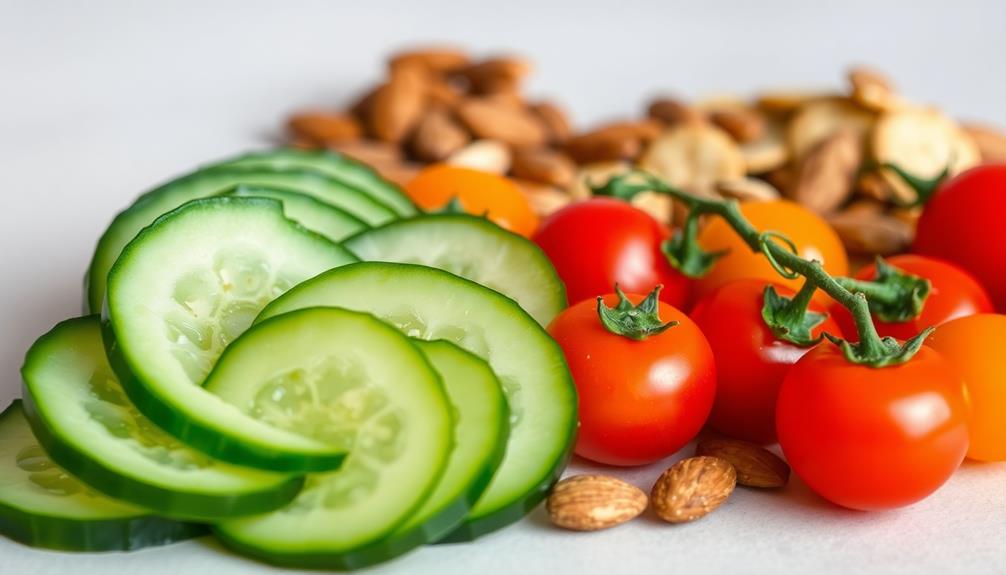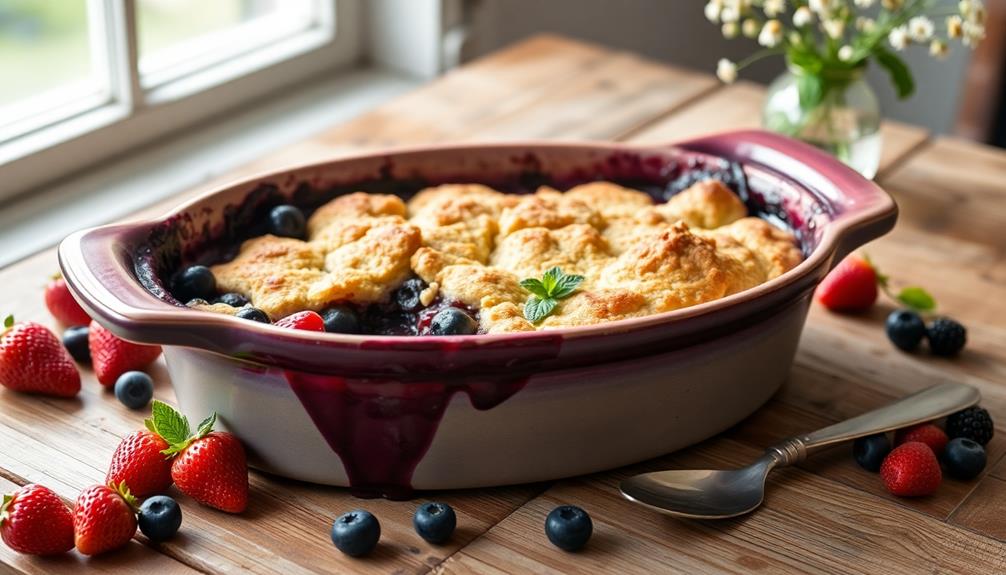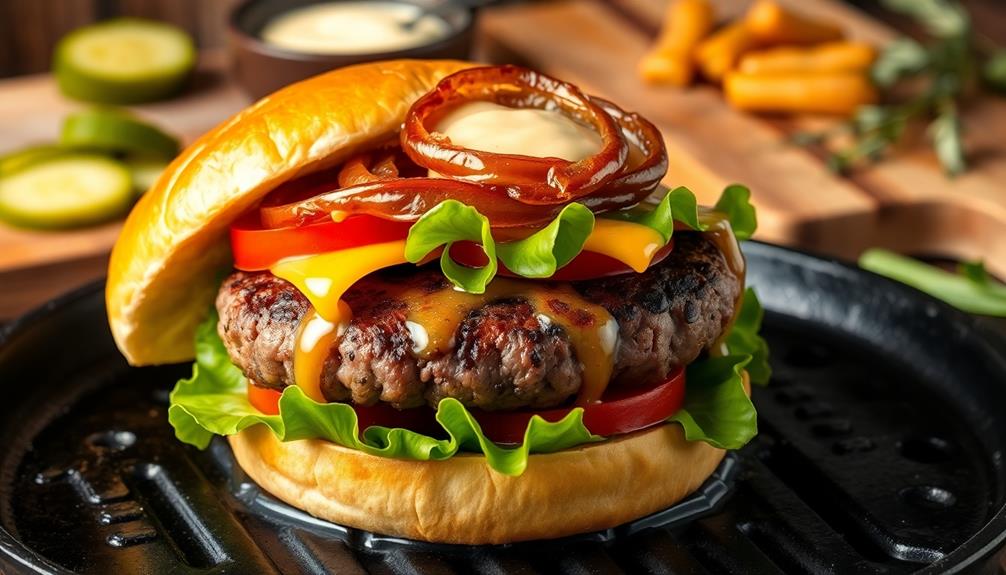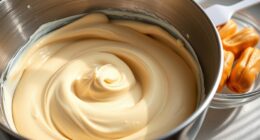Ramps, wild leeks indigenous to Appalachia, have transformed from a regional treasure to a culinary sensation nationwide. Capture their unique flavor in a ramp frittata – a versatile egg dish featuring diced ramps, shredded cheese, and aromatic seasonings. Start by sautéing the ramps, then whisk in lightly beaten eggs and bake until set. Sprinkle with Parmesan for a crispy topping. This simple yet elegant frittata showcases ramps' delicate taste, making it suitable for casual brunches or more formal gatherings. Continue reading to discover the full recipe and cooking steps for mastering this ramp-centric masterpiece. For a complete meal, pair the ramp frittata with a side of delicious wild rice pilaf recipe. The earthy flavors of the wild rice complement the ramps beautifully, and the vibrant colors create an attractive presentation. Together, these two dishes will impress your guests and add a touch of Appalachian charm to any occasion. Get ready to bring the flavors of the mountains to your table with this delightful combination.
Key Takeaways
- Ramps are a regional delicacy in the Appalachian region, valued for their unique flavor and cultural significance.
- Ramp frittata is a versatile dish that showcases the delicate taste of ramps, suitable for various occasions.
- The recipe includes essential ingredients like eggs, ramps, cheddar cheese, and olive oil, with optional customizations.
- Proper cooking techniques, such as sautéing ramps and baking the frittata, are crucial for achieving the desired texture and flavor.
- Ramp frittata is a staple in culinary repertoire due to its simple preparation and adaptability to individual preferences.
History
In spite of their long-standing presence in culinary traditions, ramps only gained mainstream popularity in recent decades. These wild leeks, native to the Appalachian region, have been a cherished ingredient for centuries, prized by Indigenous communities and Appalachian foragers.
However, it wasn't until the late 20th century that ramps began to capture the attention of chefs and food enthusiasts across the United States. As the farm-to-table movement gained momentum, the unique flavor and cultural significance of ramps resonated with those seeking authentic, locally-sourced ingredients.
Today, ramp festivals, ramp-centric menus, and a growing demand for this seasonal spring delicacy have solidified their status as a celebrated part of Appalachian heritage and modern American cuisine.
The ramp's journey from a regional treasure to a culinary sensation reflects the evolving tastes and interests of food-savvy consumers who value the story and provenance of their ingredients.
Recipe
Ramps, also known as wild leeks, are a delicious and nutritious spring vegetable that can be used in a variety of dishes. This Ramp Frittata is a simple and flavorful way to showcase the unique taste of ramps.
Frittatas are a versatile egg-based dish that can be customized with a variety of ingredients. The combination of creamy eggs, savory ramps, and tangy cheese makes for a satisfying and satisfying meal.
- 8 eggs
- 1 cup diced ramps (including both the white and green parts)
- 1/2 cup shredded cheddar cheese
- 2 tablespoons olive oil
- Salt and pepper to taste
In a 9-inch oven-safe skillet, heat the olive oil over medium heat. Add the diced ramps and sauté until they're softened, about 3-5 minutes.
In a separate bowl, whisk the eggs and season with salt and pepper. Pour the egg mixture over the ramps in the skillet and use a spatula to gently lift the edges, allowing the uncooked egg to flow underneath. Sprinkle the shredded cheese over the top.
Transfer the skillet to the oven and bake at 350°F until the frittata is set, about 15-20 minutes.
To ensure the best texture and flavor, be sure to use fresh, high-quality ramps and eggs. You can also experiment with different cheese varieties or add additional vegetables to the frittata.
Cooking Steps
Preheat your oven to 375°F.
Sauté the ramps in olive oil until fragrant.
Crack the eggs into the skillet, bake until set, about 20 minutes, then sprinkle with grated Parmesan cheese.
Step 1. Preheat Oven to 375°F
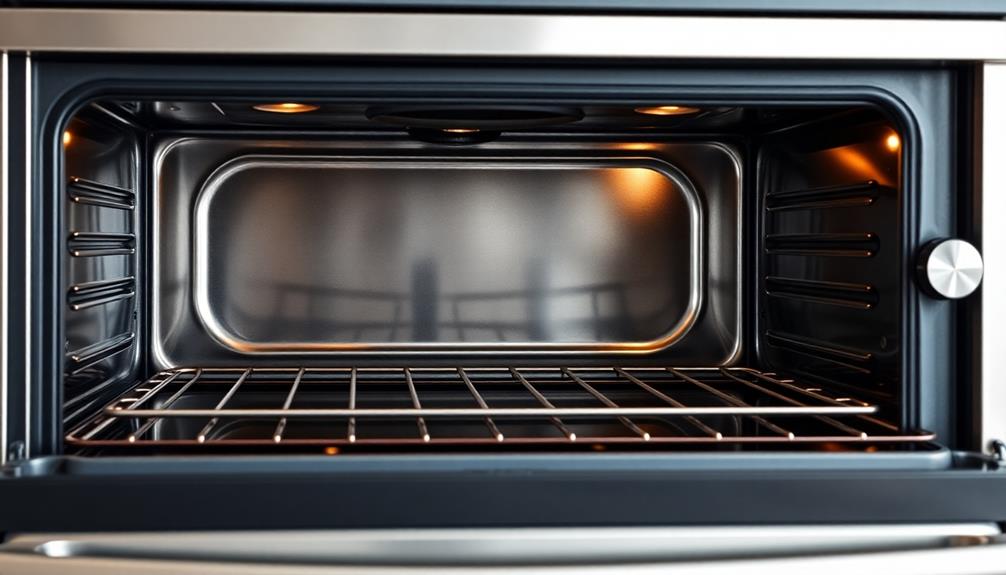
Preheating the oven to 375°F is the first crucial step in this ramp frittata recipe. You'll want to give your oven plenty of time to reach the desired temperature before you start assembling the frittata. This high heat will help the eggs set properly and give the dish a nice, fluffy texture.
Once your oven has preheated, you can move on to the next steps. Be sure to use an oven thermometer to confirm the temperature – many ovens can be off by 25°F or more, so this is an important step to ensure your frittata bakes evenly.
Allowing the oven to fully preheat will also help the ramps and other ingredients cook through properly. With the oven ready, you can now focus on preparing the other components of this delicious wild leek-filled breakfast.
Step 2. Sauté Ramps in Olive Oil
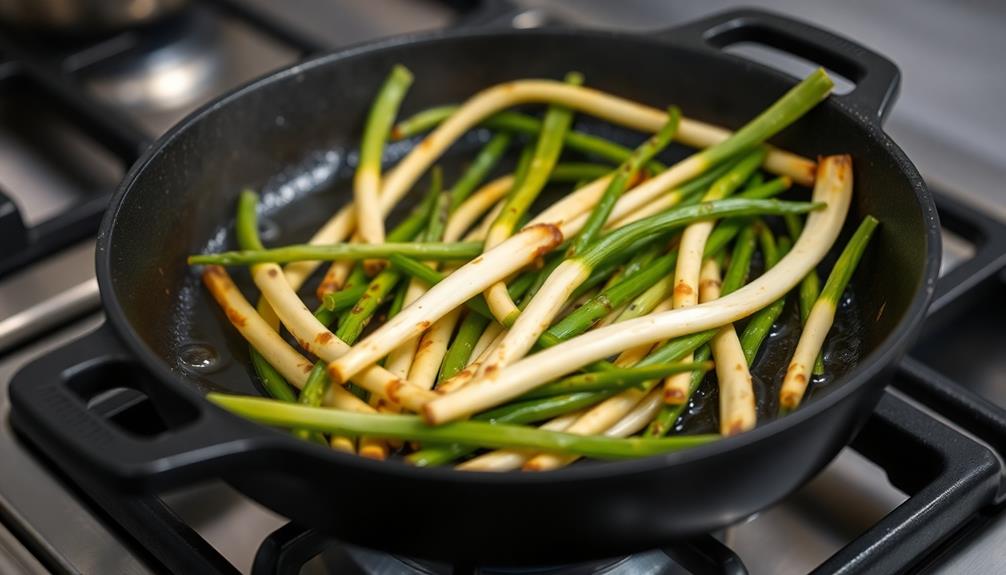
Next, sauté the ramps in a bit of olive oil. Heat the oil in a large skillet over medium heat.
Once the oil is shimmering, add the ramps and sauté for 3-5 minutes, stirring occasionally, until they're tender and fragrant.
Be careful not to overcrowd the pan; work in batches if needed to prevent the ramps from steaming instead of sautéing.
The ramps should develop a slight char and become soft and wilted.
Once they're sautéed to your liking, transfer them to a plate or bowl and set aside.
The sautéed ramps will add a lovely, pungent flavor to the frittata.
Resist the urge to snack on them all before assembling the dish!
Step 3. Crack Eggs Into the Skillet
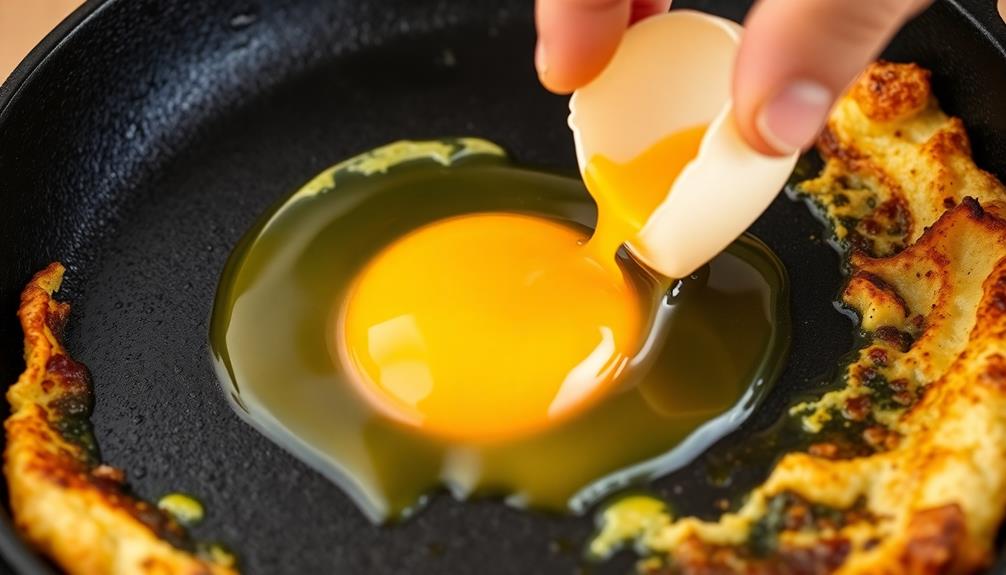
With the ramps sautéed and set aside, it's time to crack the eggs into the skillet. Before starting, ensure the kitchen is well-ventilated, as this can help reduce any lingering odors while cooking.
Gently crack the eggs, one by one, directly into the hot skillet. Be careful not to let the shells fall in. Lightly whisk the eggs with a fork to break the yolks and incorporate the whites. Season the eggs with a pinch of salt and pepper, adjusting to your taste.
Resist the urge to overstir; you want the eggs to remain slightly undercooked. Once the edges begin to set, use a spatula to gently lift the edges, allowing the uncooked egg to flow underneath. Continue this gentle folding motion until the eggs are softly scrambled.
Be mindful not to overcook, as the frittata will continue to cook in the oven. For optimal results, consider the air quality while cooking, as regular cleaning is essential for optimal performance.
Gather the sautéed ramps and any other desired fillings, then carefully pour the egg mixture over top. Slide the skillet into the oven and bake until the frittata is set and lightly golden.
Step 4. Bake Until Set, Approximately 20 Minutes
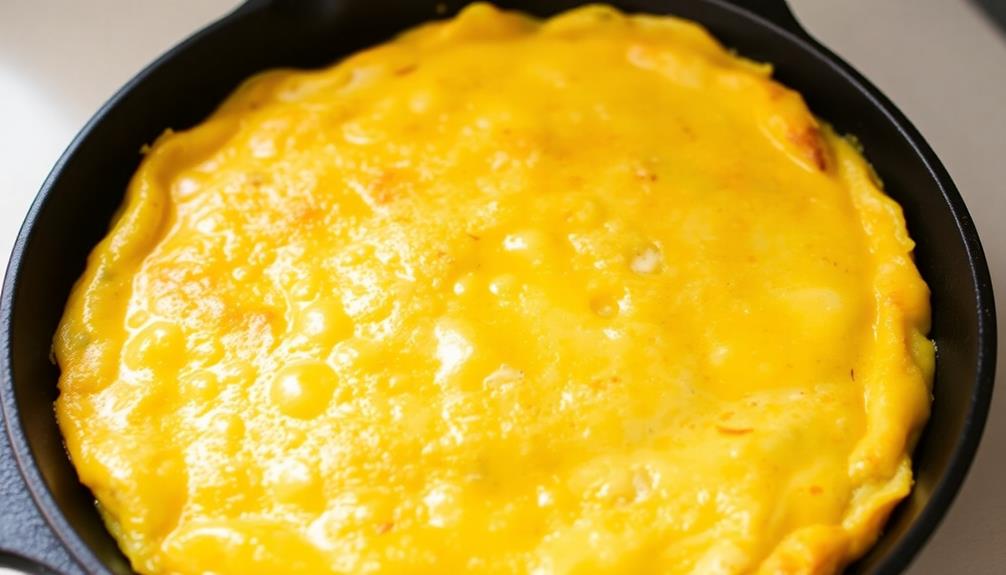
Slide the skillet into the preheated oven and bake the frittata until it's set and lightly golden, about 20 minutes.
Keep an eye on it, as the timing may vary depending on your oven. You'll know it's done when the center is no longer jiggly and a knife inserted comes out clean.
Once the frittata is baked to perfection, remove it from the oven using oven mitts.
Let it cool for a few minutes before slicing and serving. The residual heat will continue to cook the frittata, ensuring it's cooked through.
Slice the frittata into wedges and serve it warm, garnished with the reserved ramp greens, if desired.
The frittata's fluffy texture and savory, earthy ramp flavor will make it a hit at your next brunch or light meal.
Enjoy this delicious and easy-to-prepare ramp frittata!
Step 5. Sprinkle With Grated Parmesan Cheese

Once the frittata has finished baking, sprinkle it generously with grated Parmesan cheese. The sharp, salty flavor of the Parmesan will complement the earthy ramps and creamy eggs perfectly.
Be sure to use a high-quality Parmesan cheese for the best flavor. Grate the cheese directly over the top of the frittata, making sure to cover the entire surface evenly. The heat from the just-baked frittata will melt the cheese, allowing it to soak into the dish and create a delicious, crispy topping.
Sprinkle the Parmesan cheese liberally, as the flavor will mellow once it's baked into the frittata. You want each bite to have a nice cheesy flavor.
If you prefer a more intense Parmesan taste, you can even add an extra sprinkle of cheese just before serving. This final touch of grated Parmesan will take your ramp frittata to the next level of deliciousness.
Final Thoughts
The beauty of a ramp frittata lies in its versatility, allowing you to showcase the delicate flavor of ramps while crafting a dish that caters to various tastes and preferences.
Whether you're feeding a crowd or enjoying a cozy brunch, this frittata can be easily tailored to suit your needs. For a heartier meal, pair it with a fresh salad or roasted potatoes. If you're looking for a lighter option, it's equally delicious on its own.
The key is to let the ramps shine, complementing their unique taste with a well-balanced selection of ingredients. With its simple preparation and endless possibilities, the ramp frittata is a true crowd-pleaser that's sure to become a staple in your culinary repertoire.
Frequently Asked Questions
How Long Can Ramp Frittata Be Stored in the Refrigerator?
The frittata can be stored in the refrigerator for 3-4 days. Make sure to store it in an airtight container, and it's best to consume it within that time frame for optimal freshness and food safety.
Is It Possible to Use Frozen Ramps Instead of Fresh?
You can definitely use frozen ramps instead of fresh. They'll work just as well in your recipe, though the texture may be slightly different. Just be sure to thaw and drain the ramps before adding them to the frittata.
What Are Some Alternative Fillings That Can Be Used in the Frittata?
You can try a variety of fillings for your frittata. Consider sautéed mushrooms, spinach, roasted red peppers, caramelized onions, or a combination of your favorite veggies. The possibilities are endless to create a delicious and satisfying dish.
How Can the Frittata Be Reheated Without Drying It Out?
To reheat the frittata without drying it out, you can cover it with a damp paper towel and microwave it in 30-second intervals, stirring in between, until heated through. This helps retain moisture and prevent overcooking.
Are There Any Dietary Restrictions or Modifications for This Recipe?
When considering dietary restrictions or modifications for a recipe, you'll need to think about ingredients that may pose issues for certain dietary needs. Examine the recipe closely and identify any potential problem areas like dairy, gluten, or other allergens.

